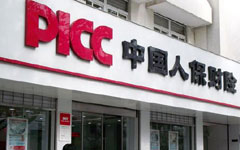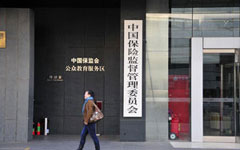Taiwan's insurers drove a surge in issuance of foreign debt, as an easing of ownership curbs allowed them to seek higher returns on $580 billion of assets.
|
 |
|
 |
All of the US currency securities were bought by insurers, as were 40 percent of Formosa bonds with maturities of three and five years, according to CTBC Bank Co.
Insurers' premium income more than doubled in the past decade as increasingly wealthy Taiwanese prepared for retirement, swelling demand for bonds and pushing down yields on local-currency debt. The 10-year sovereign Taiwan dollar yield fell to an average 1.59 percent this year from 2.66 percent in 2004, compared with the 4.15 percent coupon on Bank of Communications Co Ltd's 2021 yuan paper sold on the island.
Formosa notes "fulfill the need of insurers to raise returns", said Yuanchun Huang, a Taipei-based fund manager at Fuh Hwa Securities Investment Trust Co, which manages NT$130 billion ($4.3 billion).
"Taiwan government bonds, or other Taiwan dollar investment-grade bonds, have low yields," Huang said. "Insurers also don't have to really worry about credit risks as many yuan bond issuers are systemically important financial institutions."
Taiwanese insurers' total annual premium income grew an average 8 percent in each of the last 10 years to NT$2.7 trillion in 2013 from NT$1.2 trillion in 2003, according to Financial Supervisory Commission data. Premiums collected added up to 17.6 percent of GDP in 2013, the world's highest penetration rate, a Swiss Re Ltd report shows.
Returns on local investments have suffered with the "central bank" maintaining the benchmark rate at 1.875 percent for the past 12 quarters. The insurance sector's 3.8 percent weighted average liability cost was significantly higher than its recurring investment yield of 2.8 percent in 2013, according to a June presentation by the financial regulator.
"In the past few years, most of the industry's problems have been about where the cash can be invested," said Paul Hsu, chairman of the Life Insurance Association in Taipei. "When one pool fills up, we need to look for the next one."
CTBC, Taiwan's fourth-largest listed financial firm by market capitalization, sold Taiwan's first yuan bonds in February 2013, after a currency-clearing pact with the Chinese mainland paved the way for domestic banks to start taking such deposits. Issuance remained slow as higher yields on similar notes in Hong Kong, called Dim Sum bonds, drew investors.
Trading volume has been low, with only four of the 19 outstanding Formosa bonds changing hands in July, according to GreTai Securities data. The 5.8 billion yuan of Formosa issuance this year made up only 2 percent of the offshore yuan debt market, data compiled by Bloomberg show.
Louis Mao, a money manager at Yuanta Securities Investment Trust Co, which oversaw NT$357.8 billion of assets as of July 31, said he has not bought any yuan issues in the past three months.
"Mutual funds also look at liquidity or else when we need to exchange bonds, we may not find anyone to trade them," Taipei-based Mao said.
Trading volume may drop further and tenors may lengthen as the Formosa bonds market becomes more tailored to insurers who seldom trade their notes, Mao said.
